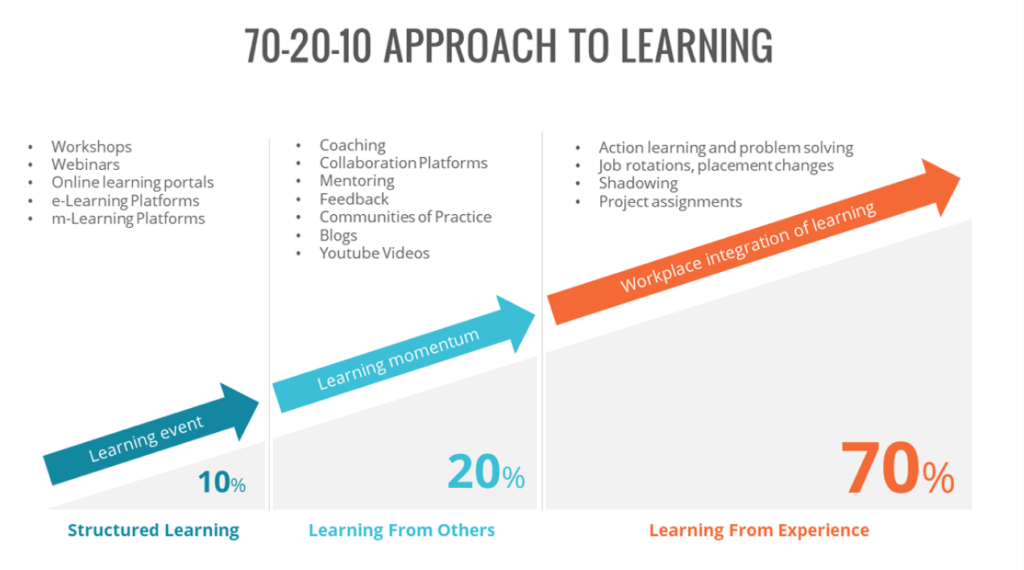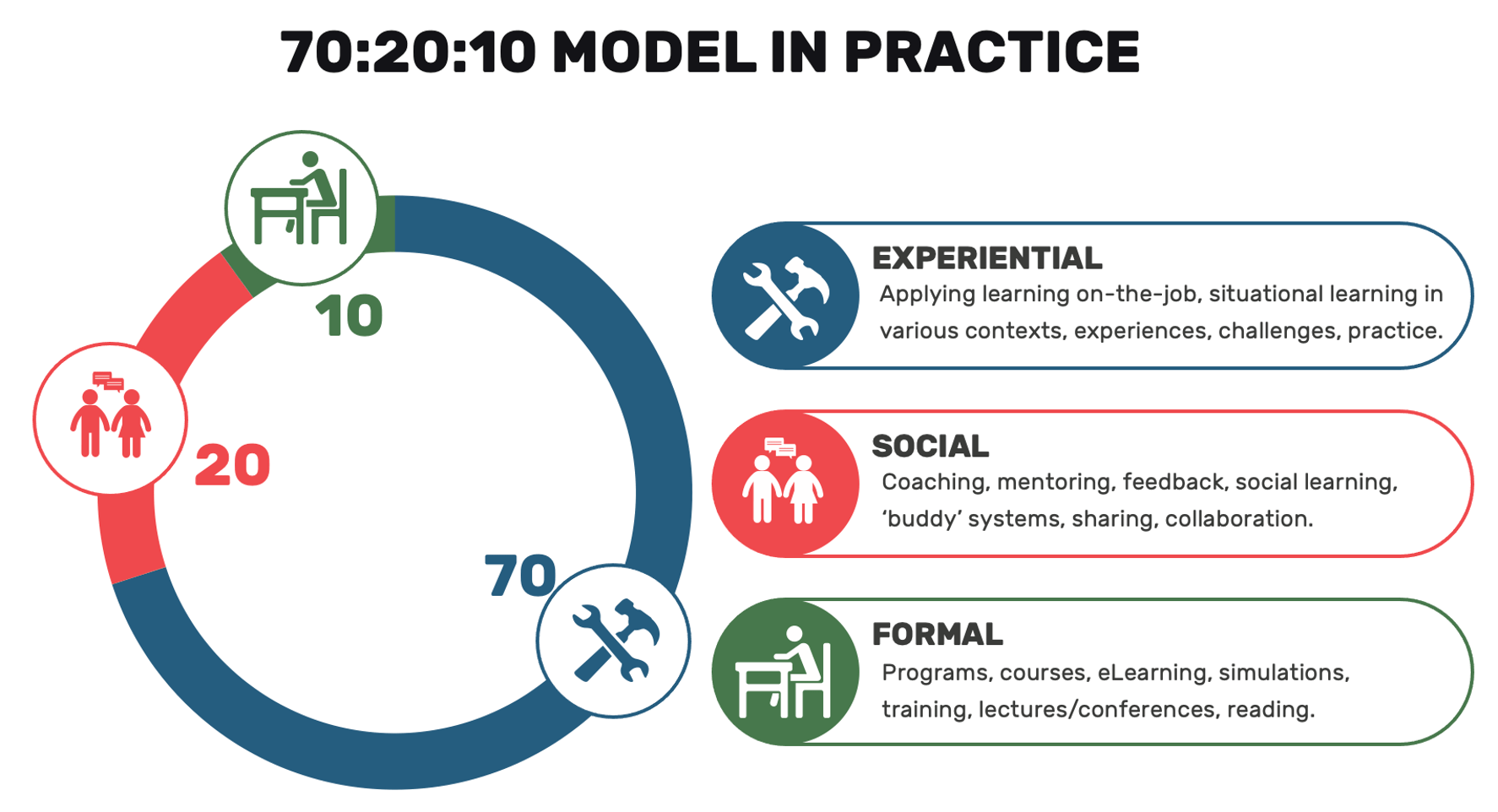In the ever-evolving landscape of Human Resources (HR) and Learning and Development (L&D), organizations are constantly seeking innovative approaches to enhance employee skills and performance. One such groundbreaking model is the 70-20-10 model, which suggests that learning and development occur through a combination of on-the-job experiences, social interactions, and formal education. In this article, we will delve into the 70-20-10 model, explore HR scenarios that align with this framework, and highlight unique best practices adopted by real-world companies.
Understanding the 70-20-10 Model:
The 70-20-10 model, popularized by Morgan McCall, Robert Eichinger, and Michael Lombardo in the 1980s, proposes that:
70% of learning comes from challenging on-the-job experiences: Employees learn best when faced with real-world challenges and tasks that stretch their capabilities. This can include new projects, job rotations, or assignments that encourage problem-solving and critical thinking.
20% of learning is derived from social interactions and relationships: Collaborative learning through interactions with peers, mentors, and colleagues is a crucial component. This includes mentorship programs, team projects, and opportunities for knowledge sharing within the organization.
10% of learning is gained through formal education and training: This involves traditional classroom or online training programs, workshops, and courses designed to impart specific skills and knowledge.

HR Scenarios:
Let’s explore different HR scenarios that align with the 70-20-10 model:
- On-the-Job Experience (70%): Scenario: A software development team is tasked with developing a new application. To enhance the team’s coding skills, the HR department assigns each member a challenging coding task aligned with the project’s objectives.
- Social Interactions (20%): Scenario: A multinational corporation encourages employees to participate in cross-functional teams to address real-world business challenges. Through these teams, employees from different departments collaborate, share expertise, and learn from each other’s perspectives.
- Formal Education (10%): Scenario: A pharmaceutical company invests in a structured training program for its salesforce to equip them with the latest product knowledge and sales techniques. This formal education program includes workshops, online courses, and assessments.
Best Practices by Real-World Companies:
- Google’s 70-20-10 Approach: Google is known for its innovative HR practices. The company embraces the 70-20-10 model by encouraging employees to spend 70% of their time on core job tasks, 20% on projects related to their job, and 10% on personal projects. This approach fosters creativity and continuous learning.
- General Electric’s Leadership Development: General Electric (GE) has successfully implemented the 70-20-10 model in its leadership development programs. GE’s HR focuses on challenging assignments (70%), coaching and mentoring (20%), and formal education programs (10%) to groom future leaders.
- Coca-Cola’s Collaborative Learning: Coca-Cola emphasizes collaborative learning through its mentorship programs. Employees are encouraged to connect with mentors from different departments, facilitating the exchange of knowledge and skills. This social interaction aspect contributes to the 20% in the 70-20-10 model.
Conclusion:
The 70-20-10 model of learning and development has proven to be a powerful framework for HR professionals seeking to optimize employee growth and performance. By integrating on-the-job experiences, social interactions, and formal education, organizations can create a holistic learning environment. Real-world companies like Google, General Electric, and Coca-Cola have successfully embraced and tailored this model to their unique organizational needs, showcasing the model’s adaptability and effectiveness in various contexts. As organizations continue to navigate the dynamic landscape of HR and L&D, the 70-20-10 model stands as a beacon for fostering continuous learning and development.











